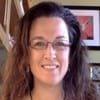Explore all the information on
Food safety
Welcome to the page about Food safety of Engormix; a source of knowledge on Food safety.
Shawna Weimer (University of Maryland) discusses one of the latest impacts COVID-19 has had on the poultry industry: Mail Order Chicks. Let's Squawk About It is a monthly interview segment by the Poultry Science Association....
Comments : 3
Recommendations: 0
Henry Berger (Global Head of Strategic Partnerships & Pipeline Innovation Integrated Health Management, Boehringer Ingelheim) speaks about his upcoming presentation at the Animal AgTech Innovation Summit 2021 on March 8, and also discusses the changes in the industry during the pandemic....
Comments : 1
Recommendations: 3
First Webinar to Feature Former Under Secretary of Agriculture for Food Safety
CHAMPAIGN, IL Feb. 9, 2021 - The Poultry Science Association (PSA) is pleased to announce the first new initiative of 2021, webinars! To kick off this event, PSA has prepared the first webinar to focus on the topic of Government, Industry, and Academia: Three Pieces Working Together to Achieve the Whole Food Safety Picture in Poultry Science with Former Under Secretary of...
Comments : 0
Recommendations: 0
Dr. Rick Sibbel, Executive Veterinary and Health Solutions LLC, gave this presentation during the 2018 NIAA Antibiotic Symposium: New Science & Technology Tools for Antibiotic Stewardship....
Comments : 0
Recommendations: 1
.jpg&w=3840&q=75)

One Health - International Rendering Symposium
Suggested link
Dr. Hector M. Cervantes, Senior Manager, Poultry Veterinary Services, Phibro Animal Health Corporation, gave this presentation during the 2018 NIAA Antibiotic Symposium: New Science & Technology Tools for Antibiotic Stewardship....
Comments : 0
Recommendations: 2
The Food and Agriculture Organization of the United Nations (FAO) is increasing efforts aimed at bolstering the global response to Fall Armyworm (FAW), considered one of the top 10 devastating plant pests affecting food and agriculture.
FAO Director-General, QU Dongyu, noted today that great strides had been made by the Global Action for Fall Armyworm Control (GA), a coordination mechanism established by him a year ago, but emphasized that many challenges remain to be tackled in...
Comments : 0
Recommendations: 1
Introduction Salmonellosis is a significant global public health issue and causes high morbidity rate and has a significant economic impact. Foodborne diseases persist in many countries and consider the most important public health problem. There is global improvement in food processing practices, hygiene measures, education of food handlers on the potential risks and information to consumers for proper utilization, but still so far to eliminate the foodborne pathogen problem...
Comments : 0
Recommendations: 0
1. Introduction Many species of filamentous fungi have the ability to produce toxic secondary metabolites known as mycotoxins. The term mycotoxin is used only for toxic substances produced by fungi related to food products and animal feed; it does not include toxins produced by mushrooms [1]. Today, about 400 structurally different mycotoxins have been discovered and divided into the following main groups: (i) aflatoxins produced by Aspergillus species and ochratoxins produced...
Comments : 0
Recommendations: 0
.jpg&w=3840&q=75)

One Health - International Rendering Symposium
Suggested link
Preventive public health measures to cope with non-communicable and infectious diseases include improving immunity through better nutrition. Immune dysfunction is regarded as both a cause and a consequence of malnutrition. Malnutrition is a daily killer in low-income and middle-income countries (LMICs), and evidence suggests that susceptibility to and severity of infections increases with malnutrition, leading to illness and death. Undernutrition interacts with repeated bouts of infectious...
Comments : 0
Recommendations: 1
Aaron Kiess (Mississippi State University) and Tomi Obe (University of Georgia) talk about a current hot topic in the poultry processing industry: salmonella sanitization. Let's Squawk About It is a monthly interview segment by the Poultry Science Association....
Comments : 0
Recommendations: 0
PSA interviewed Deana Jones with the USDA Agricultural Research Service to discuss egg safety and storage. We also take a look at "cracking" some egg myths. Let's Squawk About It is a monthly interview segment by the Poultry Science Association....
Comments : 0
Recommendations: 2
...
Comments : 0
Recommendations: 0
.jpg&w=3840&q=75)

One Health - International Rendering Symposium
Suggested link
The organizers of the Animal AgTech Innovation Summit spoke to four of the confirmed speakers for the upcoming virtual event to discover their insights about animal agriculture.
How is our understanding of the microbiome developing, and what opportunities do you see this bringing in the long term?
The integration...
Comments : 0
Recommendations: 1
The American Meat Science Association (AMSA) is pleased to announce, Dr. Manpreet Singh, Dr. Andrew Lee and Dr. Jeroen Hugenholtz will be the featured speakers in the concurrent symposium entitled “Food Safety: Developing Effective Interventions” on Wednesday, August 5, 2020 during the 66th International Congress of Meat Science and...
Comments : 0
Recommendations: 0
Antimicrobial resistance is one of the top public health problems worldwide. Especially concerning is the loss of effective antibiotics for bacterial infections that were previously highly effective and led to major advances in human health. Continued exposure to existing classes of antibiotics with few new classes emerging, coupled with failure of pharmaceutical companies to recoup return on investment relative to other classes of drugs for use in modern medicine have created a complicated...
Comments : 0
Recommendations: 0
1. Introduction Mycotoxins belong to the category of toxic secondary metabolites, and they have a low molecular weight. They are produced by filamentous fungi belonging to the phylum Ascomycota or molds, and they have great importance in the health of humans and animals, being the cause of acute and chronic diseases [1–4]. Bennett defined that mycotoxins are natural products produced by fungi that induce a toxic response when introduced at a low concentration to higher...
Comments : 0
Recommendations: 0
.jpg&w=3840&q=75)

One Health - International Rendering Symposium
Suggested link
1. Introduction Various microorganisms, including bacteria and fungi, decisively contribute to the specific characteristics of dry-fermented foods. However, the environmental conditions during the ripening of dry-fermented foods favor colonization of their surface by toxigenic molds that are able to produce mycotoxins on such foods. Aflatoxins have long been a major concern in cheese [1–5] and recent studies have highlighted their presence in dry-cured meats...
Comments : 0
Recommendations: 0
The coronavirus crisis has brought into focus the incredible public health challenge our world faces, and nowhere is this challenge more apparent than in food production. Nourishing the world during this crisis is a top priority across nations.
Our world...
Comments : 0
Recommendations: 1
Developing countries that export food internationally are increasingly aware of the need for sound food safety programmes that are in line with international standards.
To mitigate this threat, the first Aflatoxin Control Laboratory was established at the National Agricultural Research Centre (NARC) by the US Department of Agriculture in collaboration with technical support from Commonwealth Agricultural Bureaux International.
The World Health Organisation (WHO) provides...
Comments : 0
Recommendations: 0
Vice President Edward Kiwanuka Ssekandi and the Ministry of Agriculture, Animal Industry and Fisheries (MAAIF), along with USAID Mission Director Joakim Parker, have launched a nationwide campaign to combat aflatoxins that contaminate improperly handled grain, causing severe health complications, including liver cancer and stunting.
The campaign, supported through USAID’s Feed the Future programme, aims to provide advice and informational materials for farmers, processors,...
Comments : 2
Recommendations: 0


.jpg&w=3840&q=75)












